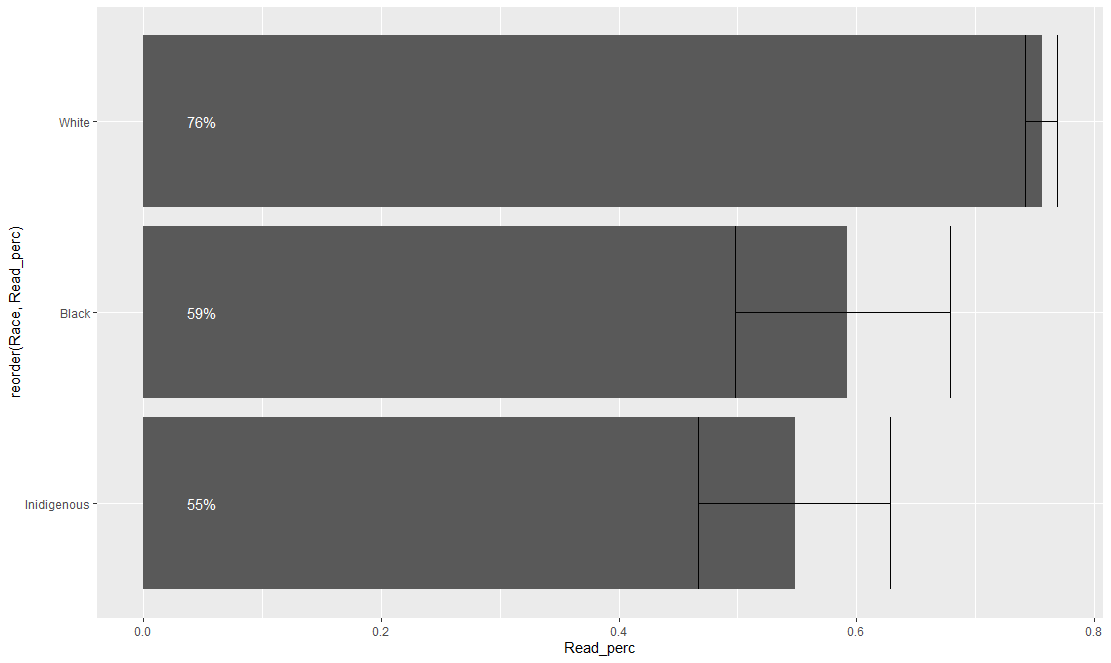I'm trying to write a function that will create a ggplot that has components all based on a single input. I have a data frame with race, results on three assessments (reading, writing, math) plus the confidence interval for each result. I want to create a function that will create the same plot based on Read, Write or Math.
Example:
library(tidyverse)
dat <- data.frame (Race = c("White", "Black", "Inidigenous"),
Read_perc = c (0.756, 0.592, 0.548),
Read_low_ci = c (0.742, 0.498, 0.467),
Read_high_ci = c(0.769, 0.679, 0.628),
Write_perc = c (0.717, 0.625, 0.497),
Write_low_ci = c (0.703, 0.532, 0.416),
Write_high_ci = c (0.731, 0.710, 0.578))
my_plot_function <- function (df, var){
var <- enquo(var)
df %>%
ggplot (aes (x = reorder (Race, !! var), y = !! var)) +
geom_col () +
coord_flip () +
geom_text (aes (label = scales::percent(!! var, accuracy = 1)),
y = 0.05,
colour = "white")
}
my_plot_function(dat, Read_perc)
Works great, but how do I modify it so that my_plot_function (dat, Read) will work? Normally I would write:
var <- "Read"
var_perc <- paste0(var, "_perc")
var_low_CI <- paste0(var, "_low_ci")
var_high_CI <- paste0(var, "_high_ci")
For example, I would like the function to read something like:
my_plot_function <- function (df, var){
var <- enquo (var)
var_low_ci <- paste0 (var, "_low_ci")
var_high_ci <- paste0 (var, "_high_ci")
df %>%
ggplot (aes (x = reorder (Race, !! var), y = !! var)) +
geom_col () +
coord_flip () +
geom_text (aes (label = scales::percent(!! var, accuracy = 1)),
y = 0.05,
colour = "white") +
geom_errorbar(aes(ymin = var_low_ci,
ymax = var_high_ci),
colour = "black")
